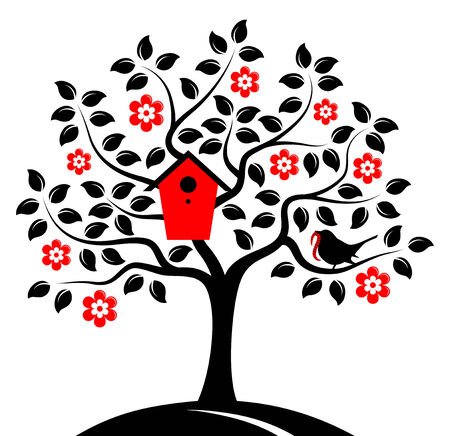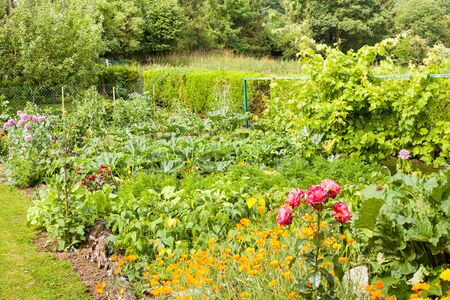Understanding Your Space
Before diving into any garden project, especially in a small American backyard, it’s essential to truly understand your available space. Every square foot counts! Start by taking a walk around your yard at different times of the day to observe how sunlight moves. Most plants need at least six hours of sunlight, so note which spots are sunny and which remain shaded—this will help determine what types of plants will thrive where. Next, test your soil; you can pick up an easy-to-use soil testing kit from your local home improvement store or county extension office. Knowing your soil type and pH will let you choose the right amendments or even decide on raised beds if needed. Finally, sketch out a basic layout of your backyard, marking existing features like patios, fences, and pathways. Use this map to visualize different zones for planting, seating, or vertical gardens. By evaluating sunlight, soil, and your layout ahead of time, you’ll set the stage for a thriving garden that makes the most of every inch.
2. Vertical Gardening Solutions
When your backyard is more cozy nook than sprawling landscape, going vertical is a total game-changer. Using fences, walls, and specially designed vertical planters lets you make the most of every inch—without sacrificing style or function. Here’s how you can transform those overlooked spaces into lush green oases.
Creative Ways to Use Vertical Spaces
Think of your fence or wall as a blank canvas for plants. With the right setup, you can grow everything from fragrant herbs to vibrant flowers and even compact vegetables. Here are a few urban-approved ideas:
| Vertical Solution | Best For | Pro Tip |
|---|---|---|
| Wall-mounted Planter Boxes | Herbs, succulents, shallow-rooted veggies | Mix and match box sizes for a dynamic look |
| Pocket Planters (Felt or Fabric) | Lettuce, strawberries, trailing plants | Hang near kitchen doors for easy harvests |
| Trellises & Lattice Panels | Cucumbers, peas, flowering vines | Add hooks for hanging baskets below climbers |
| Repurposed Pallets | Mosses, annuals, small ferns | Sand and seal wood for longevity outdoors |
| Stacked Pot Towers | Herbs, small annuals, edible flowers | Rotate pots seasonally for fresh color pops |
Space-Saving Benefits for Small Backyards
Vertical gardening not only frees up precious ground space but also adds visual interest at eye level—perfect for entertaining or relaxing outdoors in city environments. Plus, it’s easier on your back and knees when planting or harvesting.
Easy Steps to Start Your Vertical Garden:
- Assess Sunlight: Notice which walls get morning or afternoon sun—this will guide what you plant where.
- Select Your System: Choose planters or trellises that fit your backyard style (modern metal grids or rustic wood pallets).
- Plan Plant Placement: Put thirstier plants lower where water runoff collects; drought-tolerant varieties thrive higher up.
- Add Drip Irrigation: Consider simple drip lines to keep vertical gardens hydrated without fuss.
Your Backyard, Reimagined Upwards!
No matter how compact your outdoor space is, vertical gardening solutions let you layer beauty and productivity—turning fences and walls into living art while maximizing every square foot in true American city-dweller fashion.

3. Multi-Functional Zones
To truly maximize every square foot in a small backyard, it’s all about creating multi-functional zones that blend seamlessly together. Instead of dedicating separate areas for dining, lounging, and gardening, try combining these functions to make your outdoor space both practical and inviting. For example, opt for a compact bistro set that fits perfectly on a patio corner—this can serve as your morning coffee spot or an intimate dinner table under the stars. Nearby, use built-in benches with hidden storage; not only do they provide extra seating, but they’re also great for stashing gardening tools or outdoor cushions. Consider vertical garden walls or raised planters that double as privacy screens around your seating area. With smart planning, even a small deck or paved nook can become a green oasis by tucking herbs or flowers into rail planters and hanging baskets. Remember, in American urban settings where space comes at a premium, every square foot counts. Mixing uses—like placing a fire pit that transforms into a table or integrating edible plants along walkways—ensures your backyard is ready for entertaining, relaxing, and growing fresh produce, all within arm’s reach. By layering different activities and choosing furniture that serves multiple purposes, you’ll create a dynamic backyard retreat that feels much bigger than it really is.
4. Container Gardens and Raised Beds
When it comes to maximizing every inch of your small backyard, container gardens and raised beds are absolute game changers. These flexible solutions let you create a dynamic garden layout that fits your space—and your lifestyle—perfectly. Whether you’re working with a tiny patch of grass, a concrete patio, or even a balcony, pots, planters, and raised beds offer versatility and mobility while optimizing planting efficiency.
Why Choose Containers and Raised Beds?
- Flexibility: Easily move plants to catch the sun or rearrange your layout as your needs change throughout the seasons.
- Mobility: Renters or those with changing spaces can take their garden with them or adapt it as they go.
- Efficient Planting: Control soil quality, drainage, and spacing for healthier plants and higher yields—even in limited square footage.
Popular Options for Small Backyard Gardens
| Type | Main Benefits | Best For |
|---|---|---|
| Pots & Planters | Lightweight, portable, available in various sizes and styles | Herbs, annuals, small vegetables, accent flowers |
| Raised Beds | Improved drainage, better soil control, accessible height | Vegetables, root crops, mixed plantings |
| Trellised Containers | Vertical growth saves floor space; great for climbers | Cucumbers, tomatoes, beans, flowering vines |
| Tiered Planters | Multiple levels maximize growing area in tight spots | Lettuce, strawberries, herbs, succulents |
Smart Tips for Using Containers and Raised Beds in Small Spaces
- Group containers by sunlight needs: Keep sun-lovers together and shade-lovers in another spot for easy care.
- Add wheels or caddies: Make heavy pots mobile so you can chase the sun or protect plants from storms.
- Go vertical: Use shelves or wall-mounted planters to free up floor space and make the most of your square footage.
- Mix heights and shapes: Layer tall planters behind shorter ones to add depth without crowding your yard.
- Utilize corners: Place L-shaped raised beds or corner planters to turn overlooked areas into productive garden zones.
Container & Raised Bed Maintenance Essentials
- Watering: Pots dry out faster than in-ground beds—check daily during hot spells.
- Soil Refresh: Replenish nutrients each season for healthy growth; compost or slow-release fertilizers work great.
- Pest Monitoring: Keep an eye out since compact layouts can attract pests; hand-pick or use organic sprays if needed.
The Bottom Line: Adaptable Solutions for Urban Gardeners
If you’re dreaming of a lush backyard but have limited room to grow, container gardens and raised beds are your best friends. They offer the freedom to experiment with layouts, swap out plant varieties easily, and truly make every square foot count. With these strategies, even the smallest outdoor spaces can become productive oases right outside your door.
5. Native and Low-Maintenance Plants
When planning your garden layout for a small backyard, choosing the right plants is crucial for both aesthetics and practicality. One of the smartest strategies is to select native and low-maintenance plants that naturally thrive in your local climate. Not only do these hardy American varieties require less water and upkeep, but they also support local pollinators and wildlife. Consider drought-tolerant perennials like coneflowers, black-eyed Susans, or California poppies if you’re in a sunnier region. For shadier urban spaces, ferns, hostas, or coral bells are excellent options that bring lush texture with minimal fuss.
Opting for plants adapted to your specific USDA hardiness zone means less stress about weather extremes and fewer resources spent on fertilizers or pesticides. Grouping similar species together—such as mixing ornamental grasses with native wildflowers—can create visually striking borders or layered beds while simplifying care routines. Don’t overlook evergreen shrubs like boxwood or inkberry holly for year-round structure; these can be trimmed into compact shapes perfect for tight corners or along pathways.
For the ultimate low-maintenance layout, consider installing drip irrigation or using mulch to retain moisture and suppress weeds. Raised planters or vertical wall gardens filled with native succulents or herbs like sage, thyme, or lavender not only maximize every inch but also keep your garden looking fresh with little effort. By prioritizing native and resilient plants in your small backyard design, you’ll spend more time enjoying your outdoor retreat—and less time working on it.
6. Edible Landscaping
Blending edibles into your backyard design is a smart way to maximize every inch of your small space while bringing beauty and flavor to your home. Edible landscaping means incorporating vegetables, herbs, and fruit-bearing plants right alongside ornamentals, so you get a yard that looks amazing and offers a steady supply of fresh ingredients.
Mixing Beauty and Utility
Choose colorful lettuces as borders or plant curly kale among your flowers for texture. Compact blueberry bushes or dwarf fruit trees can serve as focal points, while strawberries make great ground cover around stepping stones or in hanging baskets. Even climbing beans and peas can add vertical interest when grown up trellises or along fences.
Smart Plant Placement
Think about sunlight and accessibility—most edibles need at least 6 hours of sun per day. Place kitchen herbs like basil, thyme, and rosemary in containers by your back door for easy snipping. Tuck cherry tomatoes into sunny corners or use raised beds to keep things organized and manageable.
Harvest All Season Long
By planning for staggered harvests, you’ll enjoy fresh produce from spring to fall. Leafy greens mature quickly, while peppers and tomatoes peak in summer, followed by late-season crops like carrots or beets. With edible landscaping, your backyard becomes both a feast for the eyes and the dinner table—no farmers market required!

